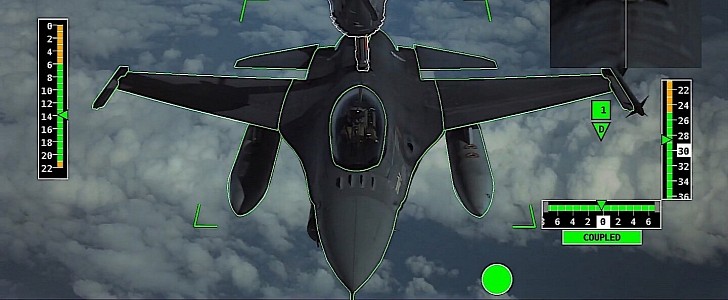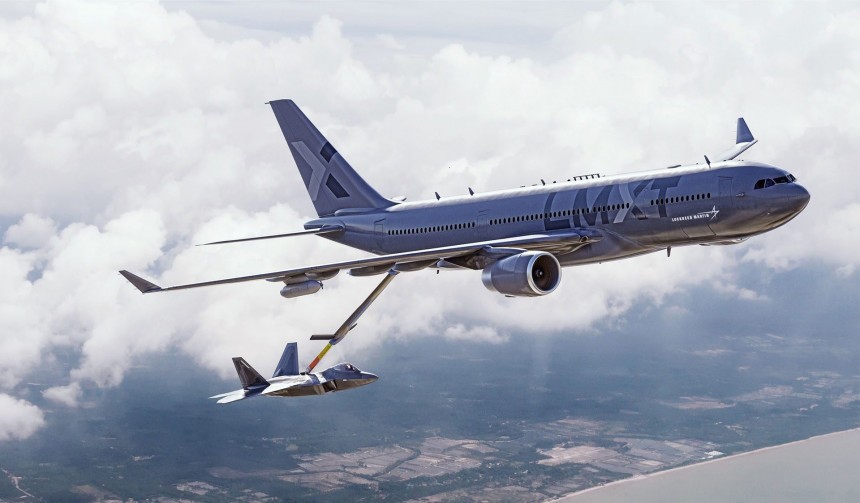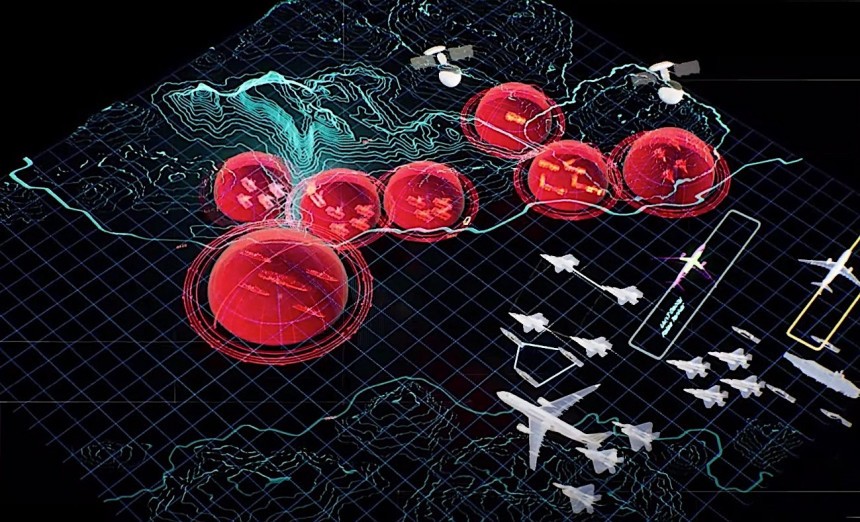Of all the militaries in the world, the American one has the largest fleet of aerial tankers. Comprising otherwise normal planes converted to carry loads of fuel, the fleet had at one point over 700 of them working for the mighty U.S. of A. It was (and is) the largest such fleet in the world, and twice the size of the tanker fleets of all other nations on this Earth combined.
The U.S. Air Force (USAF), now going through a full-blown modernization and streamlining process, plans to cut that number to about 450, but also replace some of the existing hardware it uses for such tasks. As you’re reading this, American fighter and transport planes, but also helicopters, get their fill mid-air from the likes of the KC-135 Stratotanker and KC-46 Pegasus, the pillars of this fleet.
Most of these planes are getting old, though, and the U.S. has plans to replace some of them for the future, shrunken lineup. And the Lockheed Martin - Airbus LMXT seems to be one of the best solutions at hand.
Described by the companies making it “America’s next strategic tanker,” the LMXT is part of the Air Force’s KC-Y program. It is in fact a modified Airbus A330 Multi Role Tanker Transport (MRTT), it in turn based on the civilian A330. The MRTT is in the service of about 14 countries, with about 60 units ordered thus far.
The American LMXT will be the most advanced variant of the European-made flying platform and, most importantly, it will be put together in the U.S., in Mobile, Alabama, and Marietta, Georgia. The thing that sets it apart from the pack, the fully automatic boom (the air-to-air refueling system), will be made in Arkansas, at a new facility Airbus is planning to erect.
The plane is 193 feet (59 meters) long and 57 feet (17 meters) high. From wing tip to wing tip, it measures 198 feet (60 meters), and it comes with a maximum takeoff weight of 533,500 lbs (242,000 kg). Of that, 271,700 lbs (123,240 kg) is fuel for the military aircraft in need of it.
All that fuel will be sent to the recipient tanks by something Lockheed Martin and Airbus describe as the world’s first fully automatic boom/air-to-air refueling (A3R) system (check second video below the text), a fly-by-wire system that will allow faster refueling operations at increased range.
It was back in 2020 when Airbus announced it achieved the world’s first fully automatic refueling contacts. The missions took place over the Atlantic Ocean, where the MRTT refueled a Portuguese Air Force F-16.
What fully automatic means in this case is that the A3R boom, once deployed, keeps the alignment between its tip and the receiver receptacle, on its own, “with an accuracy of a couple of centimeters.”
The system also determines “the optimum moment to extend the telescopic beam to achieve the connection with the receiver.” Once that happens, the fuel transfer is a go. Once the receiver plane’s tanks are full, the boom disconnects, gets clear, and retracts.
During all of this, the air refueling operator (ARO) is reduced to just an observer, ready to jump in if and only when something goes wrong.
At the time of writing, the boom system deployed on the Airbus machine is certified for refueling no less than ten aircraft, namely the F-35A, F-22, F-16, A-10, B1-B, C-17, E-3, E-7, F-15, P-8A.
Aside from being a capable refueler, the LMXT is also envisioned as a Joint All Domain Operations node, meaning it will integrate and be integrated with air, land, maritime, cyberspace, and space assets (first video below for more details).
More details on the LMXT (but, of course, not all) will be released as work on the project progresses. Presently, the tanker aircraft is scheduled to start rolling off production lines by the end of the decade.
Most of these planes are getting old, though, and the U.S. has plans to replace some of them for the future, shrunken lineup. And the Lockheed Martin - Airbus LMXT seems to be one of the best solutions at hand.
Described by the companies making it “America’s next strategic tanker,” the LMXT is part of the Air Force’s KC-Y program. It is in fact a modified Airbus A330 Multi Role Tanker Transport (MRTT), it in turn based on the civilian A330. The MRTT is in the service of about 14 countries, with about 60 units ordered thus far.
The American LMXT will be the most advanced variant of the European-made flying platform and, most importantly, it will be put together in the U.S., in Mobile, Alabama, and Marietta, Georgia. The thing that sets it apart from the pack, the fully automatic boom (the air-to-air refueling system), will be made in Arkansas, at a new facility Airbus is planning to erect.
All that fuel will be sent to the recipient tanks by something Lockheed Martin and Airbus describe as the world’s first fully automatic boom/air-to-air refueling (A3R) system (check second video below the text), a fly-by-wire system that will allow faster refueling operations at increased range.
It was back in 2020 when Airbus announced it achieved the world’s first fully automatic refueling contacts. The missions took place over the Atlantic Ocean, where the MRTT refueled a Portuguese Air Force F-16.
What fully automatic means in this case is that the A3R boom, once deployed, keeps the alignment between its tip and the receiver receptacle, on its own, “with an accuracy of a couple of centimeters.”
During all of this, the air refueling operator (ARO) is reduced to just an observer, ready to jump in if and only when something goes wrong.
At the time of writing, the boom system deployed on the Airbus machine is certified for refueling no less than ten aircraft, namely the F-35A, F-22, F-16, A-10, B1-B, C-17, E-3, E-7, F-15, P-8A.
Aside from being a capable refueler, the LMXT is also envisioned as a Joint All Domain Operations node, meaning it will integrate and be integrated with air, land, maritime, cyberspace, and space assets (first video below for more details).
More details on the LMXT (but, of course, not all) will be released as work on the project progresses. Presently, the tanker aircraft is scheduled to start rolling off production lines by the end of the decade.





















